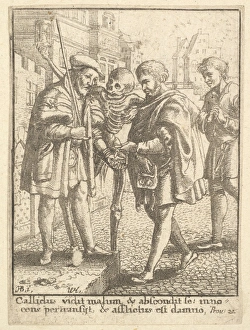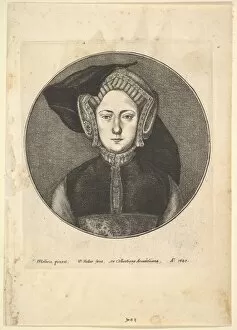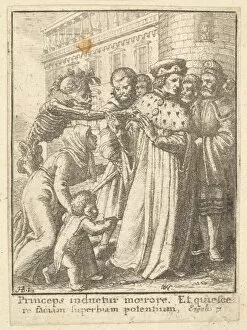After Hans Holbein The Younger Collection
"After Hans Holbein the Younger: A Captivating Collection of Etchings" Step into the mesmerizing world of Hans Holbein the Younger
All Professionally Made to Order for Quick Shipping
"After Hans Holbein the Younger: A Captivating Collection of Etchings" Step into the mesmerizing world of Hans Holbein the Younger, a renowned artist whose etchings continue to captivate audiences centuries later. From his meticulous attention to detail to his thought-provoking subject matter, each piece tells a unique story that transcends time. In "Washing Hands, " created between 1625-77, we witness an intimate moment frozen in time. The delicate etching captures the act of cleansing one's hands, symbolizing purity and renewal. It serves as a reminder of our constant pursuit for cleanliness and self-reflection. Moving on to "Knight Dance Death" from 1651, we are confronted with a haunting image that explores mortality. This second state etching portrays death as an equalizer, dancing alongside knights who were once considered invincible. It forces us to confront our own mortality and reflect upon the transient nature of life. Holbein's ability to capture human emotion is evident in "Young Woman Wearing Feathered Cap" from 1647. Through intricate lines and shading techniques, he brings this young woman to life, her eyes filled with mystery and intrigue. We are left wondering about her story – what secrets lie behind that feathered cap? In "Carrying Cross, " another etching from 1625-77, we witness Christ's burden as he carries his cross towards Calvary. Holbein's masterful technique highlights every detail - the strain on Christ's face and the weight of his sacrifice become palpable through these delicate lines. The series continues with "Cardinal Dance Death, " where even high-ranking members of society cannot escape their inevitable fate. In this second state etching from 1651, Holbein challenges societal hierarchies by depicting cardinals dancing hand-in-hand with death itself.
















































